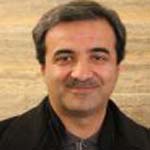Estimation of Runoff Catchment in East Azerbaijan Province: Comparative Application of Calibration Methods and Uncertainty Analysis of SWAT Model
Conservation of soil and water resources is one of the most important principles of proper management of catchments. Therefore, erosion and changes in land use concerns make the importance of predicting the effects of these actions on soil water resources even more important. Therefore, it is necessary to model and evaluate their results. In order to better manage the water balance of the catchment areas, it is essential that the modeling of hydrological phenomena in the catchment area can be an optimal solution for them because of the time it consumes and the costly measurement of water balance components (Zarehkarizi & Talbi, 2016). Therefore, accurate knowledge of the hydrologic behavior of catchment areas can help to better simulate this environment in order to control the main components of the water table (Mojenazadeh, Gahraman, & Davari, 2016). On the other hand, the limitation of measurement methods in hydrology and the need for a method for generalizing the statistics to untapped basins or places that cannot be measured, as well as the simulation of future hydrological changes are among the main reasons for hydrological simulation (Beven, 2001). Many models have been proposed for describing and forecasting the hydrology of the rivers that are very different from the point of view of the time scale and spatial scale (Setegn, Dargahi, Srinivasan, & Melesse, 2010). One of these models is the recent SWAT hydrological model. This model is a semi-distributive model designed to simulate the hydrology of the catchment area on a daily scale. In order to investigate the effect of different management strategies on flow, sediment, nutrients and chemical shale in different watersheds, Land is developed (Arnold et al., 1998).
The Lanbarn watershed is located on the eastern side of the Aharchay River. The area of this sub-basin is 20118 hectares and is the main axis of the Aharchi River. This basin is located in Sina subdivision from the central part of Varzaqan City of Eastern Azarbaijan Province. The SWAT model was used to study runoff in this basin. The SWAT is an example of basic physics models that solves the fundamental physics equations to simulate the processes of the catchment system. This model is semi-distributed and temporally connected in terms of spatial scale. The SWAT model simulation can be divided into two main parts: terrestrial and aqueous phase. Terrestrial phase is related to land surface processes and water, sediment and chemical elements to the main waterways of each sub basin. The aqueous phase simulates the processes of waterways and canals involving the movement of water, sediment, and chemicals. The smallest unit in this model is the HRU Hydraulic Response Unit, which is derived from the combination of slope, soil and land use maps. Soil water, surface runoff, sediment and chemicals are first calculated for each HRU and then for each sub-basin and finally for the entire catchment. The data used in this study include topographic map, land use, soil, precipitation, minimum and maximum temperature, wind speed, solar radiation and daily relative humidity of synoptic stations of Ahar, evapotranspiration of Varzgan and Rain gauges of Eilagh and Dubai Cassine Station. The study area was divided into 17 sub-basins and 469 hydrological units. From 2000 to 2003, the model was warmed up 10 years for calibration and 4 years for validation.
In order to determine the degree of sensitivity of the flow parameters in the SWAT model, two methods of SUFI-2 and GLUE sensitivity tests for the 22 selected parameters were performed. Of the 15 critical parameters of the SWAT model, the density of the soil mass, the soil hydraulic conductivity in the saturation state, the coefficient of evaporation of groundwater, the constant flow rate from the canal, the snowfall temperature, and the snow melting temperature are more sensitive. In terms of 15 sensitive parameters, the swat model is more sensitive to soil mass density factors, saturated hydraulic conductivity, ground water evaporation coefficient, canal discharge constant, snowfall temperature, snow melting temperature. All model assessment criteria in runoff simulation are allowed. But the comparison of the two methods shows that the SUFI-2 method has a better performance than GLUE in this basin. The comparison of graphs, real discharge and the monthly simulated values shows that SWAT model underestimates runoff underestimates. Most streams that the model could not simulate were in late winter and spring. One of the weaknesses of the model in estimating the maximum runoff is the use of the SCS model in the calculation of runoff, which does not simulate the runoff from snowmelt appropriately.
The results of the application of two methods of SUFI-2 and GLUE in the Lanbran watershed were investigated. Based on the evaluation criteria of the SUFI-2 method, both calibration and validation stages have good results as compared with the GLUE method in this basin. Also, both methods could not predict peaks because they predicted both methods in Dubai sky-highs to be less real than actual Dubai. Although it is easier to use the GLUE method than the SUFI-2 method, the number of simulations is higher for the solution in the GLUE method, Therefore, according to the results, it can be concluded that the SUFI-2 method with low simulation numbers is better than GLUE in this basin.
- حق عضویت دریافتی صرف حمایت از نشریات عضو و نگهداری، تکمیل و توسعه مگیران میشود.
- پرداخت حق اشتراک و دانلود مقالات اجازه بازنشر آن در سایر رسانههای چاپی و دیجیتال را به کاربر نمیدهد.



